
Chinese regional cuisine: Shaanxi food, with noodles galore, and the best places in Hong Kong to eat it
From rou jia mo – an open bun stuffed with chopped pork, which resembles a Chinese hamburger – to the traditional biangbiang noodles, two restaurants in the city are keeping the western province’s food culture alive and well
There’s a group of Shaanxi people living in Hong Kong who consider it their second home. They have a shared mission – to introduce the culture of the western Chinese province to the city.
Neil Han Liang is one of them, and he has chosen food as the medium to raise Shaanxi’s profile in Hong Kong. He started Chang’An Taste in Hung Hom in 2016 and has since opened two more branches.
Where to find the best food in Xian, China’s ancient capital
He has strict standards for almost every dish he serves. Take rou jia mo – an open bun stuffed with chopped pork, which resembles a Chinese hamburger. Each mo (the bread part) should measure 10cm in diameter, with five per cent variation allowed, and weigh 50g. The mo comes in two types – firm-crunchy and fluffy-crispy.
To make the bun, no baking powder is used, as a piece of the old dough is reserved from each batch, and mixed in with the new dough, acting as a natural leavener. Lard is added to give a fluffy-crispy texture.
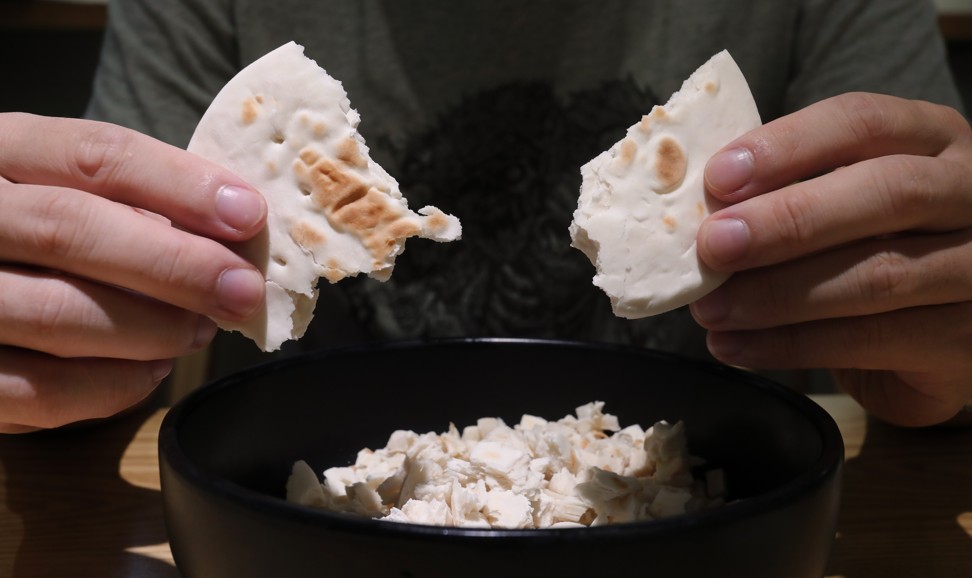
The meat in the mo is stewed for a day with 17 spices including aniseed, cinnamon, cloves, fennel seeds and tangerine peel, before being chopped up. Chefs in Shaanxi would use half lean and half fat pork, but Han reduces the percentage of fat for health-conscious Hongkongers.
“Actually rou jia mo is not ubiquitous all over Shaanxi,” Han explains. “Neither people from the north (of the province) nor the south eat it as much as we Guanzhong [central Shaanxi] folks do. Because of the geographical proximity, the northerners’ palate is close to Inner Mongolia and the southerners to Sichuan food.”

Shaanxi is characterised by a monsoon climate and well defined seasons, with high temperature and frequent rainfall in the summer and cold, dry weather in winter. The marked difference in temperature and long sunshine hours make Shaanxi good farming country. Wheat is important in the everyday diet of Shaanxi people, providing the basic source of nutrition and energy.
Biangbiang noodles are synonymous with Shaanxi. “Biangbiang” is the sound of the pounding used in making the noodle, during which the chef pulls and slaps the dough against the work surface. It’s the repetitive movement that transforms the dough to al dente strands.
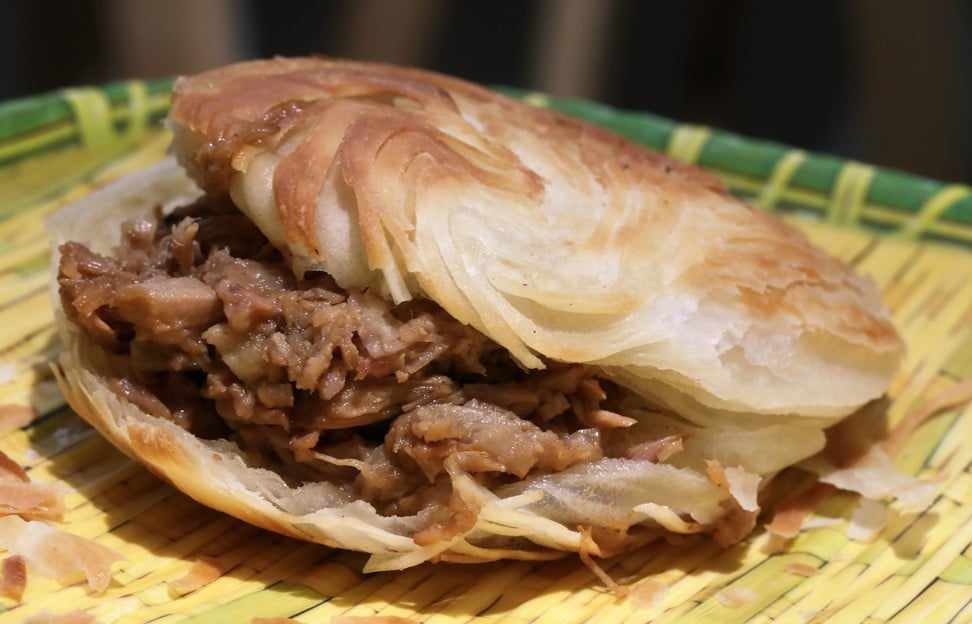
Han says that each strand should measure 1 to 1.2 metres, and each bowl contains three strands. Pulling the dough is quite an art and takes great experience,says Shaanxi chef He Sancheng.
“You have to exert an even force, or the noodle strand will be thick in the middle and thin towards the ends. If you pull too hard, the dough will break apart and it won’t get the ideal length,” he explains.
More than lamb kebabs: Xinjiang food, and eating it in Hong Kong
He pulls out a piece of risen dough, cut in a rectangular shape, and clutching the two ends, stretches it firmly. When it’s pulled to arm’s length, He flicks his wrists rhythmically while slamming the strand onto the work surface.
It’s stunning to see the strand bouncing off into the air and falling back to hit the surface in perfect sync with He’s fluid movement. In a few seconds, a long, straight, belt-like noodle takes shape, which has given rise to the nickname “pant belt noodle”.
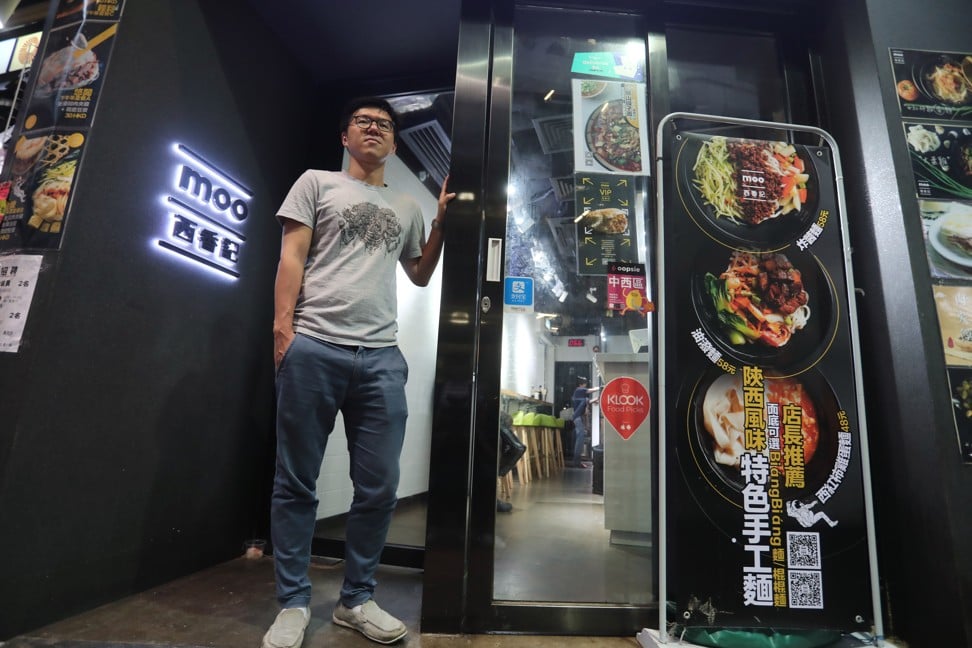
He learned the skill during years of practice in vocational institutes and back kitchens, starting from when he was an apprentice. He has lost count of how many times he had practised before finally getting it right. “No less than 10,000 times, probably”, he says.
Almost every housewife in Shaanxi can make biangbiang noodles, He says. But, since there’s no need to fuss about the aesthetics, the home-made biangbiang noodles, while tasting fine, are probably less attractive.
You have to exert an even force, or the noodle strand will be thick in the middle and thin towards the ends
Once boiled, the noodles are splashed with sizzling hot oil scented with scallions and chilli peppers, which gives them a tempting sheen. The frugal recipe harks back to the old days when meat was scarce.
Chef He ramps up the traditional recipe by adding bits of braised pork belly as a final touch, while vegetarians can go for egg-tomato sauce. “Humble but rich. It never falls out of favour in Shaanxi, probably because it reminds us of the flavour of our mother’s dishes,” He says with relish.
Yang rou pao mo, an iconic delicacy in Shaanxi, is also on offer at Chang’An Taste. The staple mo is dipped in savoury broth and eaten with meat andgarnishes. Diners need to break the bread into small pieces with their hands before handing them over to the chef, who will boil the mo with mutton or beef broth before serving it.
Tearing apart the mo is not easy. “The best shreds are in a uniform size of a fly head,” says He. “When the chef sees your mo finely shredded, he would put his heart more seriously into preparing your bowl.”
He adds that “even how you consume the dish suggests whether you are a genuine gourmet or an amateur”. A layman who does not know how to use chopsticks to sweep up all ingredients into a mouthful, will mean their mo could end up sticking together. “It’s quite an art,” He says.
In Yau Yuen Siu Tsui restaurant, biangbiang noodles are paired with dumplings, and it makes for a filling meal.
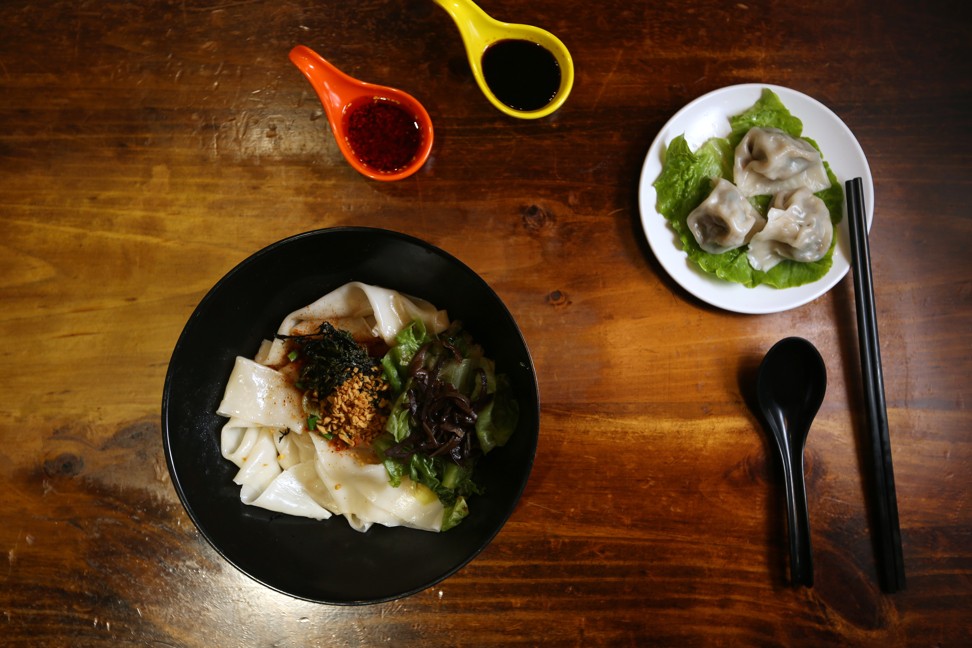
“Hong Kong diners are always seeking variations when it comes to deciding what to eat,” says the owner Luo Xiaoyu, who is from Weinan, a city in eastern Shaanxi.
She created the combo after realising that Hong Kong people consider noodles differently than Shaanxi natives or northerners do. “While to us [Shaanxi natives] a heaping bowl of noodles is a standard whole meal, Hong Kong people may not be content with that.” The combination was an instant hit.
Luo says that Shaanxi people cannot live without two things – “One is [anything] flour-made, and the other is chilli pepper.”
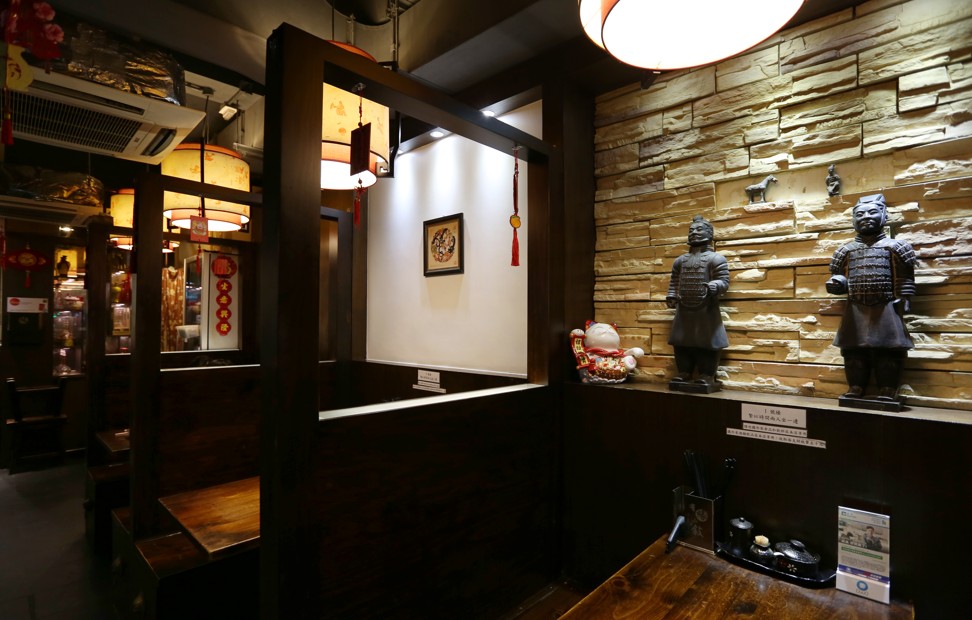
She looks back fondly on her childhood when her mother would vary and tweak flour-based recipes to liven up the family’s flagging appetite. “La tiao zi, mao er duo [cat ear shaped-noodle], braised noodles, steamed giant dumplings, steamed vegetable dumplings, che mian [another name for belt noodle] – flour is the most versatile ingredient in the region.”
Luo does not make all of her hometown favourites for the restaurant, fearing they are “too Shaanxi” for Hong Kong customers, and even her Hong Kong husband and children haven’t acquired a taste for them. But she is still eager to describe them. La tiao zi, better known as gun gun mian (stick stick noodle) is fashioned into the shape of a matchstick, although Luo says it’s more like a mouse tail.

It’s dressed with a savoury sauce of chopped wood ear mushrooms, dried bean curd, potato and sliced pork. Mao er duo noodle requires a deft thumb that presses small dough discs into the curled shape of a cat’s ear. It’s a hassle to prepare, and takes Luo hours in the kitchen to make just a single portion.
“Accurately speaking, liang pi is a generic term for the type of food. It can be divided into several categories based on different cooking methods and the ratio of flour to water,” Luo explains.

Her customers like liang pi, or tossed cold noodles; her restaurant also serves niang pi, which is a thick and wide translucent noodle laced with a mix of sizzling chilli oil and vinegar. The chilli oil is spiked with more than 100 kinds of pulverised spices, which are all transported from Luo’s hometown. Gluten, or mian jin, also belongs to the family of liang pi noodles in Shaanxi, and is made by washing wheat dough repeatedly until the starch is removed.
Chang’an Taste, Hung Hom - Shaanxi fare at a fair price
“A platter of liang pi, a rou jia mo, and a bottle of Bing Feng [one of earliest soft drink brands in China launched in 1953 in X’an] is a standard set lunch for young women in Shaanxi,” says Luo.
Chang’An Taste 西香记
Shop 2 D Bulkeley Street, Hung Hom, tel: 5222 1773
Yau Yuen Siu Tsui 有缘小叙
36 Man Yuen Street, Jordan, tel: 5300 2682
